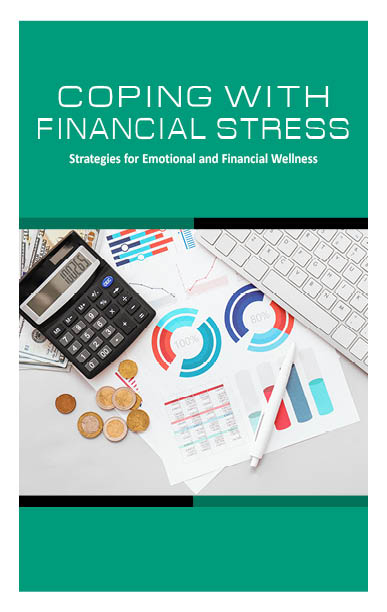The best way to save is by letting other people save for you.
Saving enough for retirement seems impossible for many Americans. It feels so hopeless, they’ve given up.
Obstacles like credit card debt or living paycheck to paycheck stop many from stashing away for the future. Nearly 2 in 5 aren’t saving for their retirement. That’s the depressing takeaway from a poll of more than 1,000 Americans by personal finance site Anytime Estimate.
The best way to get over that fear today is to make positive choices for tomorrow. Many companies pay workers simply for saving money on their own. But there are even more resources you can use.
This guide can help you learn how to save for retirement while you’re paying off debt. Here’s how to do both.
If you’re living paycheck to paycheck…
The first step is starting a budget. It’s time to start if you haven’t already. KOFE has sources that can make budgeting easy.
Here are the main steps:
- Calculate your income
- Calculate monthly expenses
- Set attainable and measurable goals
- Check and adjust your numbers to stay on budget
Sixty percent of Americans are living paycheck to paycheck. Inflation is so high, almost half of six-figure earners say they’re “struggling to get by.”
It’s hard to set extra money aside for savings when you have nothing left by your next payday. Most workers put between $50 and $150 into their savings accounts every two weeks. That can be a lot to ask for if you’re using every penny for expenses.
Start by adding up your income – there are three different kinds:
- Active income includes things like salary and bonuses.
- Passive income includes social interest, social security, and pension income.
- Variable income is anything that may change from week to week.
Then tally up your expenses and decide what’s a necessity and what is a discretionary expense – something you want, not need. Limit how often you go out to eat and cut out subscriptions you don’t need.
As you’re budgeting, set goals for yourself and make sure that they’re realistic for your situation. You should also be able to measure the goal. For example, “I will save $500 in two months.” Once you’ve done all of that you just need to stay on top of it. It’s a good idea to look back and review your spending periodically. That way you can adjust your goals as needed.
Find solutions to shrink your debt payments
It’s time to pay down your debt now that you’re taking advantage of your employer’s offers and shrinking your discretionary spending. The goal is to limit your monthly payments so that you have extra cash to put into savings. There are three main ways to do this.
1. Debt consolidation
This method refinances your debt. A debt consolidation loan combines all of your debts into one account. Not only does this make it easier to keep track of payments, but it also decreases the APR you’re paying on those loans. This will save you the money you need to build up your savings.
This works for any unsecured debt like credit cards, personal loans, student loans, and back taxes.
2. A debt management program
Debt management programs (DMPs) are an agreement between you and your lenders. A nonprofit consumer credit counseling service acts as a middleman to consolidate your debts into one payment plan. The nonprofit team advocates on your behalf, trying to reduce or eliminate interest payments and fees.
You can use a DMP for credit cards, personal loans, some medical bills, and maybe payday loans.
3. Hardship-based federal student loan repayment plans
This, of course, only works for student loan debt. These plans create a new monthly payment that’s based on your Adjusted Gross Income (AGI) and the size of your family. This is a great option because payments can get reduced to 10-20% or less of your AGI.
You should start freeing up more and more money which you can put toward your 401(k) as you use any one of these debt solutions and begin budgeting. The healthier your savings, the happier you’ll be when it’s time to retire.
Use your employer’s 401(k)
A 401(k) plan is one of the best tools when saving for retirement.
There are individual accounts and employer-sponsored accounts. See if your employer offers a match program. For every dollar you put into your 401(k), your employer will match it by a certain percentage. It’s free money that goes directly to your retirement.
The money you put into a 401(k) is tax-deferred until you withdraw it. So you won’t be paying taxes on those funds for years. This is helpful because most retirees end up in a lower tax bracket than they were in before retirement.
Individual Retirement Arrangement (IRA)
An IRA is a great option if you don’t have a 401(k) or want to supplement one. It’s a savings plan that isn’t attached to your employer. IRAs, like 401(k)s, allow you to make tax-deferred contributions to your retirement savings.
There are two types of IRAs – traditional IRA and Roth IRA. A Roth IRA is the most common and popular. You make contributions with after-tax income, but you won’t be taxed when you withdraw the money once you retire. The 2019 IRA contribution limit is $6,000, so that’s the most you can currently contribute in a single year.
A traditional IRA doesn’t have a limit and is best for workers that don’t have access to a 401(k). You can make contributions to a traditional IRA until you’re 70 ½ years old and there are no contribution limits, making this the most popular IRA option.
A Roth IRA is better for low to middle class workers since the government only allows lower tax brackets to open one. Roth IRAs also have a $6,000 contribution limit. This rises to $7,000 for those older than 50.
How much money do you need to retire?
Experts generally suggest you save about $1.5 million. Hitting that mark will give you about $60,000 a year depending on when you retire. It sounds like a lot, but it’s doable.
| Total savings at 65 | Annual income from savings |
|---|---|
| $300,000 | $12,270/year |
| $1,000,000 | $40,900/year |
| $1,500,000 | $61,350/year |
At the end of the day, it all depends on the kind of lifestyle you want to maintain. You’ll also have some income from Social Security while in retirement. In 2023, the average payment is $1,827 a month.
It’s important to talk to a financial planner that can help you find the right plan for your situation. Speak to one of KOFE’s financial coaches today to get started.














